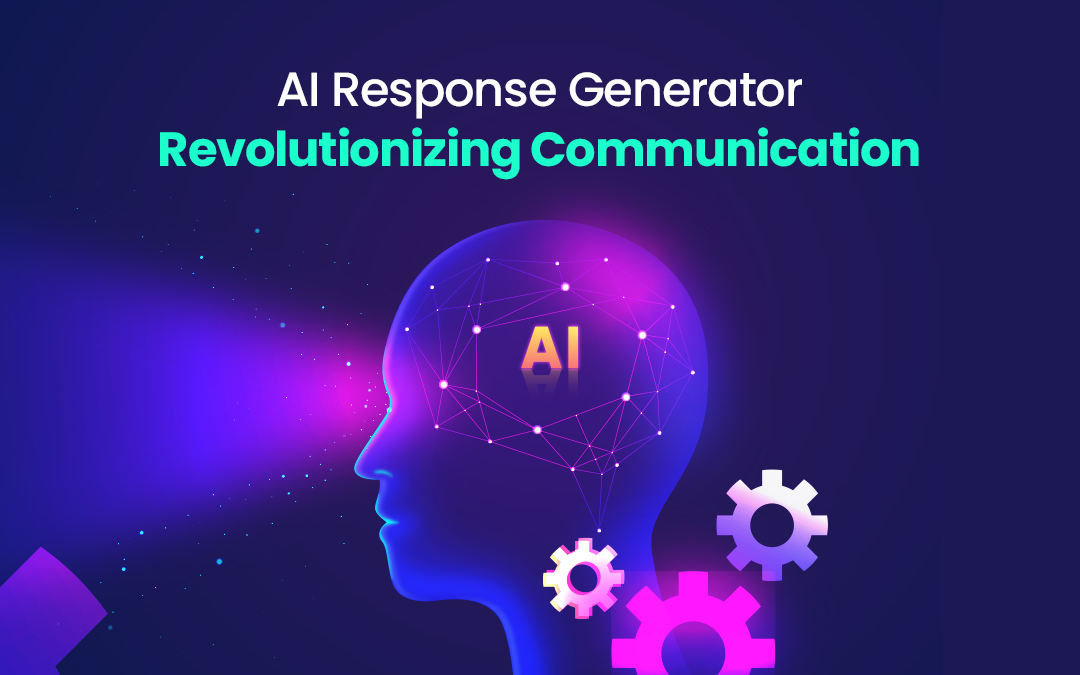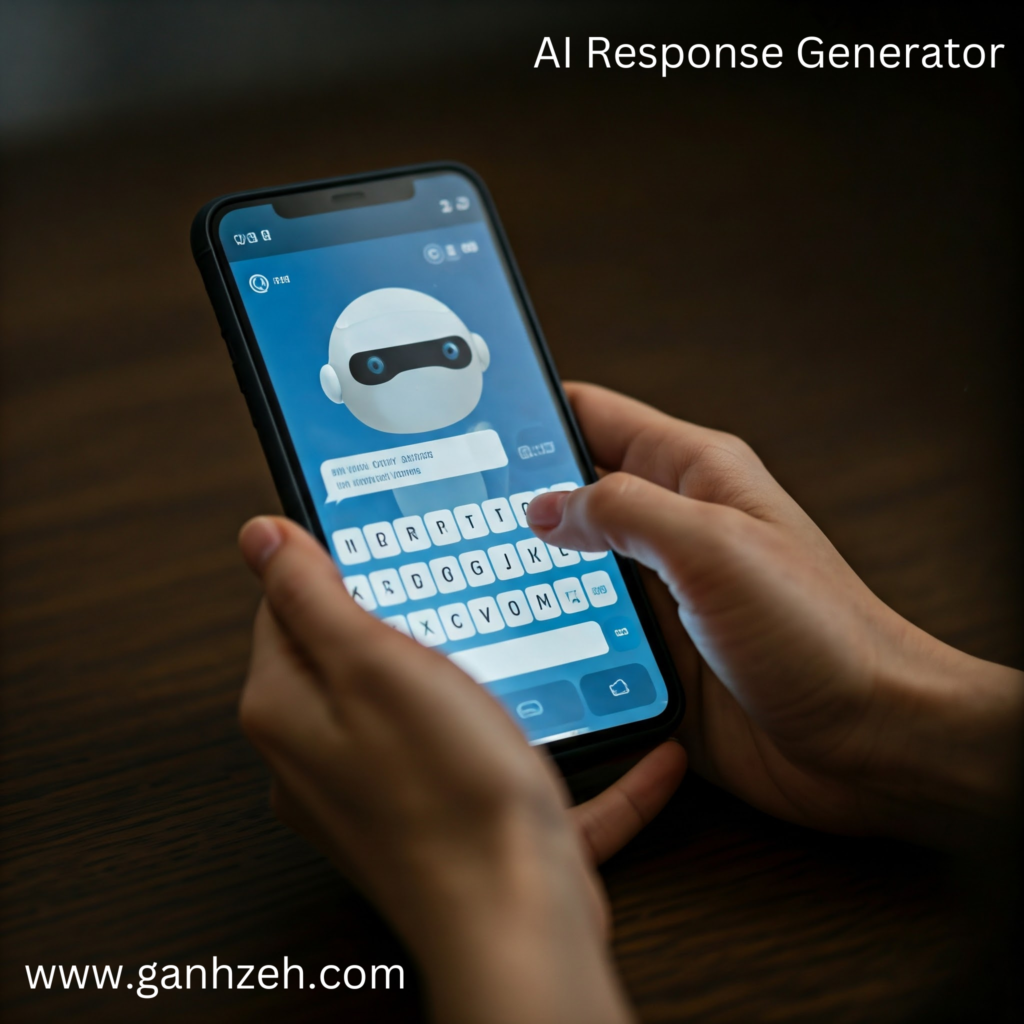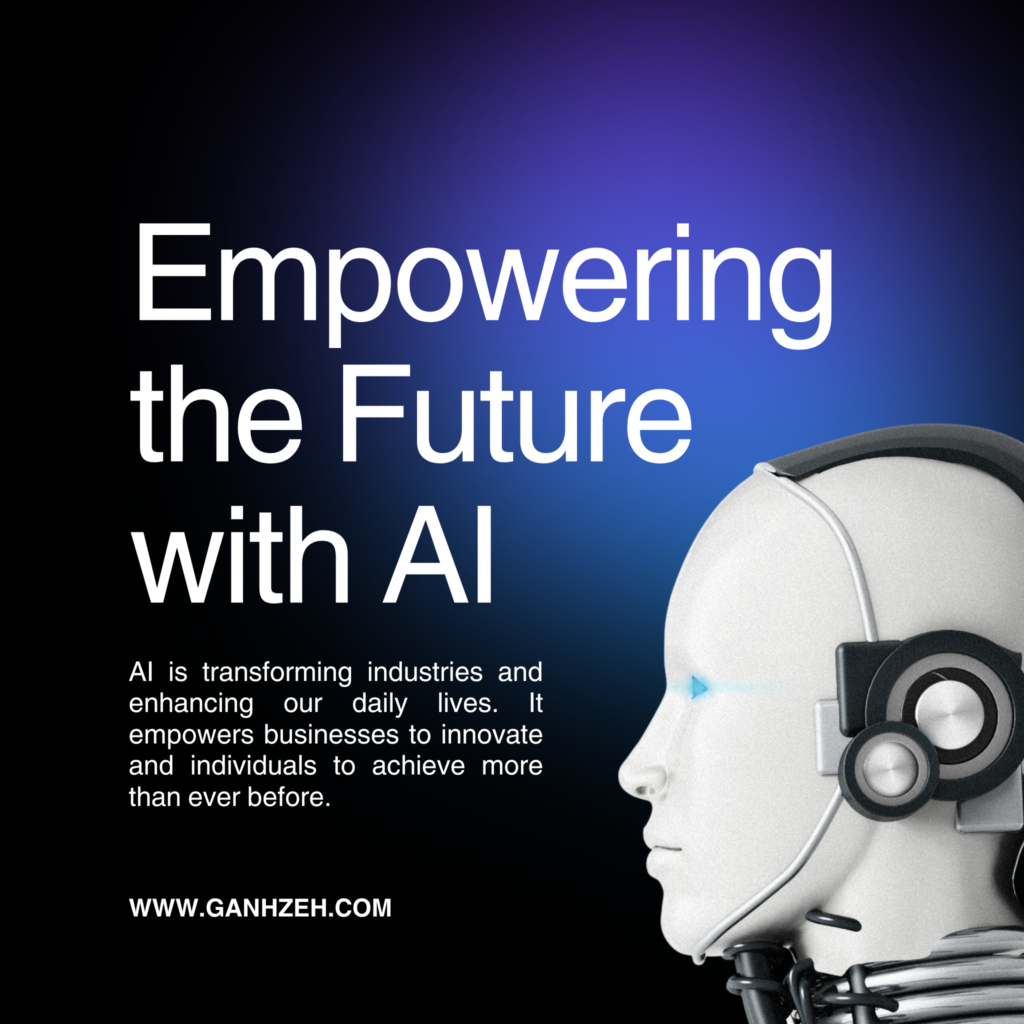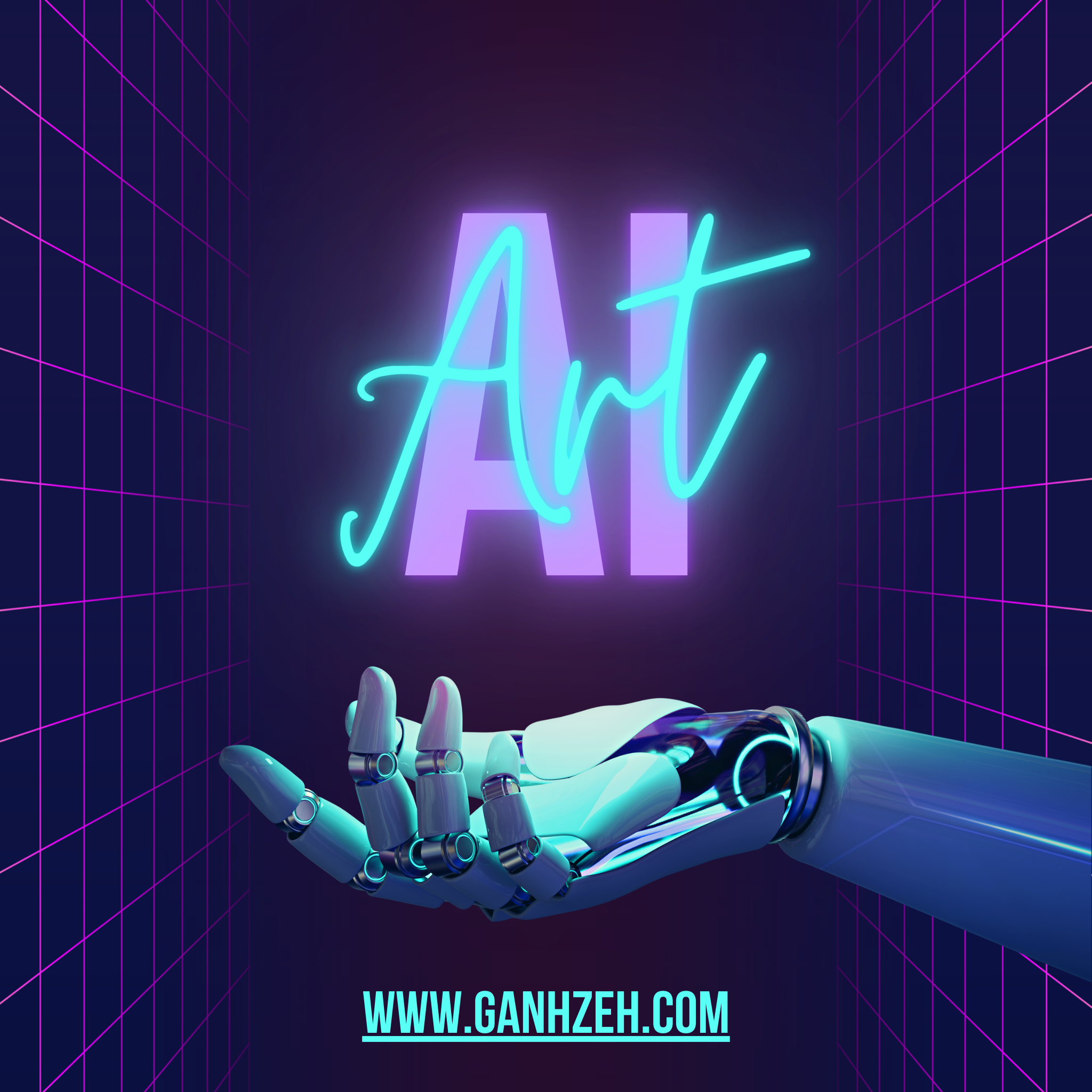
AI response generators are a remarkable piece of technology today, bridging humans with machines. Talking to technology is essential in the digital age, and these software applications help. These highly specialized software and artificial intelligence response generators mimic human conversations. They are more widely popular as conversational AI, chatbot engines, or dialogue systems. These AI response generators are changing and transforming the way people use and interact with technology. We now see these systems in customer service, e-commerce, education, and entertainment.

Table of Contents
How Does an AI Response Generator Function?
NLP techniques are an important aspect of advanced AI response generators. Such advanced AI systems utilize cutting-edge AI techniques that help them accurately understand and interpret even the most complicated human phrases.
The advanced AI system performs the following processes:
NLU:
Often referred to as natural language understanding, NLU serves as the fundamental basis for interacting with machines. It is complex and encompasses a range of processes aimed at achieving it. NLU is the final stage, where the central concept of NLU is figuring out the essence of the sentence the user is trying to say.
Part of speech Tagging:
In this case, the system first determines these roles for each word in a sentence. Assigning such linguistic categories to the sentence enhances the interpretation of any word by revealing its role. It also facilitates the achievement of functional word theories.
Named Entity Recognition (NER):
This module is responsible for recognizing and classifying particular entities, such as people’s names, geographical areas or places, organizations, other entities, and specific dates. This feature is crucial for recognizing and accurately capturing user intent based on their relevant queries. For example, consider a user’s query, “flights to London next week.” NER would tag ‘London’ as an entity and ‘next week’ as ‘time.’.
Sentiment Analysis:
By examining the politeness level of the user’s message—positive, negative, or neutral—she gets an idea about how the user feels regarding certain attitudes. This ensures that the system is more responsive and accurate, for instance, when engaging with a user. For example, if a customer complains about a wrongly delivered product, the system would utilize NER to identify the complaint and advise the user that their order is on its way.
Intent Recognition:
The absolute maximum end of natural language understanding should help the user form their intent with the message, be it solving a question, making a request, giving criticism, or sharing an opinion. Understanding the user’s intent is important for generating the right and needed responses. For example, a user may contact the system and ask, “What is the weather in New York?” It is the user who wants to know the weather, which is what is meant by intention.
Dialogue Management:
A system engages in intelligent conversations effortlessly through several built-in modules and software.
History Tracking:
To complete larger and more complex tasks, the system has to recall information from previous interactions. Retaining this information allows AI to deliver customized and worthwhile tweets. For example, suppose a user requests specific information about a given product and its price. In that case, the AI can “remember” the earlier mention of the product and its specific price.
Response Selection: The process of determining the best answer starts with the user’s statement and the movement of the ongoing dialogue. The user’s voice, level of focus and attention during a conversation, and the type of response that is needed also determine the response given. Moreover, there are times when the system favors certain responses that aim to add additional value to the user.
Handling Interruptions and Clarifications:
Most conversations’ contents are usually not stable and are not predicted. The system should also deal with interruptions, the need for features, and changes in user intentions in a conversational context. This requires the system to respond appropriately, even in unexpected situations. For instance, if the user interrupts the system by saying something and asking a different question or even asking for further clarification regarding the response before, then the system should be designed to respond to the user appropriately.
Natural Language Generation (NLG):
NLG is the most significant stage in which a thoughtful answer is generated and written in a natural and interesting manner.
Selection of Phrases and Sentences:
The program picks words and sentences that have the desired meaning and wish to deliver an intended message. This includes looking at how understandable, brief, and polite the conversation is. The goal should be to use clear, simple language and be maximally geared towards an efficient aide.
Grammatical Errors and Naturally Sound Text:
It’s crucial that the automated responses to users are free of grammatical errors and written fluently. It is a significant challenge to ensure that the produced text is grammatically correct, simple to read, and succinct. This will make communication more convenient and create positive impressions of the system.
User-Centric Design:
The system should provide more meaningful and resonating interactions, which can be done by customizing communication according to the users’ interactions with it. This customization can be achieved through the user’s name, past interactions with the system, or even communication style. This means the system can use a user’s name to get, personalize, and set the desired tone for the response.
An Array of Architectures of AI Response Generators
The complexity of AI response generators varies, depending on their architecture, as discussed below in brief:
Rule-Based Systems:
These work on static rules and employ decision trees. They are simple to build but can be rigid and unable to manage intricate or unforeseen user requests. Such systems have a low bandwidth for adjusting to new cases or interpreting languages, even with slight variations.
Machine Learning-Based Systems:
They have adopted an approach that utilizes machine learning algorithms based on prior information.
Support Vector Machines (SVM): Traditionally, they predict a user’s intent and the appropriate response. SVMs can separate users’ intentions into orders for tracking orders, customer service, and product information so that the right conversation can happen in the system’s SVM mode.
Decision Trees:
Build an arrangement of two or more ascending decisions to determine the course of the conversations. Decision trees assist the system in evaluating and making more decisions based on considering several aspects and their results. This can bring about efficiency in responses.
Naïve Bayes: This feature allows the system to take certain actions by making assumptions about the user inputs on probabilities for classifying them. With a Bayes approach, you can guess how likely a user will do or say something based on a certain input. This lets the system come up with the most likely and logical result.
Deep Learning-based Systems:
These advanced ones are based on the latest trends in deep learning, particularly architectures involving:
Recurrent Neural Networks (RNNs) are worked out on sequential data like languages and comprehend the context and the association of language in conversations. For instance, conversational agents with RNNs can grasp the discussion dynamics and respond appropriately to users in the conversation.
Long-Short-Term Memory (LSTM) networks: LSTMs, a type of RNN, address issues with long conversation memory in operations by remembering and combining previous conversations. LSTMs are most capable of tasks that require the system to remember the entire dialogue, such as long and multiple-turn conversations.
Transformer models: Language Models (LMs), such as Generative Pre-trained Transformers (GPT), have greatly improved the language processing field. These models are excellent at learning the complex structures of sentences and mimicking language patterns, producing more advanced conversations. Transformers have done well in creative text composition, language interpretation, and structural and functional dialogue.
An Undifferentiated Portfolio of Industries
The widespread proliferation of AI response generators has been because of the multi-use nature of the technology:
Customer Service:
- Uninterrupted Access: Supporting clients throughout the day and night to ensure that someone is always available to assist. AI-assisted chatbots are available all day and night to support customers instantly and thus support efficiency by cutting down on client wait time.
- Managing High Inquiries: Efficiently meeting customer demands, streamlining support staff, and ensuring a positive customer experience. AI response generators can deal with multiple questions from customers at the same time, allowing human agents to deal with more advanced questions and improving the overall performance.
- Automating Routine Tasks: Routine tasks, such as responding to commonly asked questions, giving information about order tracking, and assisting customers in resetting passwords, are automated, which saves time and enhances the work of agents in handling advanced queries to provide better customer service. This enables human agents to invest their efforts and time in more difficult customer tasks.
- Personalized Support: Supplying clients with specific assistance according to their requirements and preferences provides a more exciting one-on-one service. AI response generators can use customer data and history to suggest goods based on a customer’s profile, resolve targeted queries, and assist customers. This increases customer engagement and retention.
E-commerce:
- Product Recommendations: Customers can benefit from their browsing habits and spending patterns by suggesting certain products to improve their shopping experience and generate sales. AI can understand user behavior. AI recommendation engines evaluate user-profiles and seek relevant items for that particular user.
- Order Placement and Tracking: Helping customers with ordering and tracking items is a more effective way of enhancing and satisfying people’s experiences. This makes it easier for chatbots to explain the ordering process to customers, answer their questions about delivery and shipment, and offer real-time order status updates.
- Engagement with Shopping Assistants: To increase customer engagement, it is essential to develop products, such as virtual shopping assistants, that can suggest items, respond to queries, or help process checkout. Such virtual shopping assistants are useful for building customer relationships, increasing customer engagement with the brand, and thus enhancing customer loyalty.
Healthcare:
- Scheduling Appointments: Helping patients find available times to see their doctors or other health staff makes getting the care they need easier. AI-driven chatbots can book appointments, reducing what used to be long lines to a single interaction with a receptionist or assistant and boosting client satisfaction.
- Providing Medical Information: Responding to queries about basic health matters and general health and wellness is one of the entry-level roles. In most cases, these can serve as extras while healthcare professionals are busy performing core, actionable, and high-priority tasks. With these, chatbots can assist patients by providing the necessary information, responding to the most common queries, and providing some guidance regarding the highest priority, allowing healthcare professionals to concentrate on tasks of higher importance.
- Remote Patient Monitoring: Remotely supervising the general state of the patient’s health and sending out alerts in case of emergencies expands the life-protecting capabilities of accessible patient care services. AI-enabled platforms can monitor a patient’s vitals, medication use, and other parameters and send alerts to the healthcare system when necessary, enabling timely and customized treatment.
Education:
- Personalized education: Refers to an innovative educational approach whereby every student is placed in unique strategies to equip them with the necessary tools to maximize their learning experience. With the help of AI-powered educational tools, the student’s performance will be evaluated alongside diagnosing missing gaps in knowledge, which in turn would motivate the child to be guided towards the correct path by narrowing down the student’s needs.
- Personalized tutoring and mentoring: Can aid students with various individual learning difficulties. Aiding and guiding the students with such techniques also allows the children to receive a dose of attention and care. AI-enabled tutors, on the other hand, are excellent tools as they offer the lone student’s orientation through guidance from a tutor, comebacks to queries most students experience, and even design exercises that ensure learners understand the context, allowing them to fulfil the required outcome.
- Automated Grading and Feedback: This enables learning institution administrators to shift their focus from writing long glossed comments on students’ scripts, which would turn down the procedures from passive to active feedback. AI-facilitated grading systems struggle to scale automatically, resulting in timed comments and a lack of confidence among students in distinguishing between themselves and instructors.
Entertainment:
- Interactive Storytelling: Interactive chats using AI abilities have revved up the entertainment of AI-empowered storytelling and engaged users. Users can now decide their unique moments combined with characters, enabling them to take a front-row view of how the story develops.
- Entertainment Recommendations: It will include movies, music, and any other form of content. These will enable the analysis of each user’s preferences based on their viewing history and the making of relevant suggestions. We expect this to enhance content discoverability and offer users more engaging options.
- Deploying chatbots on social media: It can achieve user engagement, community building, and interactive experiences. Games, quizzes, and even product promotion can engage users. Providing answers and customer support is another field where the market’s strongest brands want to make a mark and build empowered communities.
Some Examples of AI Response Generator

The Future of AI Response Generators: A Glimpse Ahead
Indeed, AI response generators have the potential to evolve the way one interacts with their devices.
Enhanced Natural Language Understanding:
AI response generators can potentially transform the user experience by expanding the feasible boundaries. First, due to the incredibly complex nature of language, the development of natural language processing will continue to be a focus area for the foreseeable future. As users begin to communicate with emotion, sarcasm, humor, and other various nuances, allowing AI to respond engagingly and naturally becomes vital.
Increased Personalization:
In the near future, AI response generators will produce far-reaching machine responses tailored to each user. As these systems increase in sophistication and resilience, custom systems will be able to decipher a user’s idiosyncratic preferences, ranging from their preferred language to their preferred writing style.
Multimodal Interactions:
Attaining an engaging and real-life experience through AI response generation will only be possible through the multimodal rendering of video and audio alongside text-to-speech. Multimodality for AI generation on text and speech will allow for intriguing immersion. With various modes of communication introduced, human interaction with AI will become much more intuitive and relatable.
Integration with Other Technologies:
Pairing AI response generation with VR, augmented reality, automation, and other forms of IoT will pave the way for new forms of immersive experiences, including controlling smart home devices and engaging with robots. Seamless interaction between diverse tools and technologies will only broaden AI’s potential while also providing endless possibilities.

Ethical Considerations:
As AI response generators become increasingly sophisticated, certain ethics, such as bias, privacy, and transparency issues, must be considered so that AI systems remain both responsible and competent. There are urgent calls for biases to be addressed, user privacy to be protected, and decision-making processes to be redesigned to enhance the responsible development and deployment of AI systems.
Explainable AI:
There is an emerging demand for explainable AI, where people can grasp and decipher the AI systems’ decision-making processes. This has a significant impact on AI response generators as it enhances users’ trust and transparency in their engagements. Explainable AI will make it much easier for users to find out how the system came up with a certain response, which contributes greatly to trust and transparency.
Emotional Intelligence:
It is possible that in the future, AI response generators will deploy emotional intelligence, which will help these generators be more understanding and responsive to the user’s emotions to create more supportive and compassionate engagements. This will help the systems interpret and act on users’ emotions and enhance the interactions to be much more compassionate and supportive.
Conclusion
AI response generators are continuously reshaping our relationship with technology and are proving beneficial across all spheres. As technology continues to grow, it will be fascinating to see what other innovations emerge with the help of AI response generators. These tools are transforming how people communicate, work, and live in the future, thereby contributing to the growth of the global economy.
You can read related article “Perchance AI: A Great Creative Tool for Writers, Artists, and Game Designers In 2025” on our site as well.






